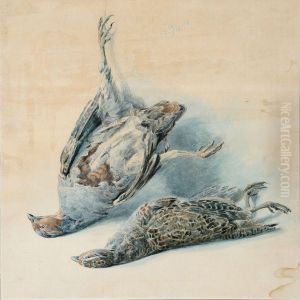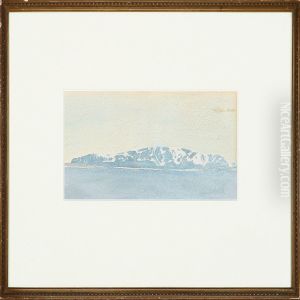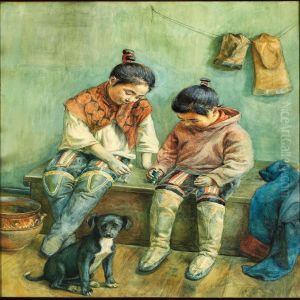Christine Deichmann Paintings
Christine Deichmann, born in 1869 in Denmark, was a notable figure in the Danish art scene, particularly recognized for her contributions as a painter. Her life spanned a period of significant change and development in European art, and she was an integral part of the movement that saw Danish art evolve at the turn of the 20th century. Although she may not be as widely known as some of her contemporaries, her work and influence are undeniable in the context of Danish art history. Deichmann's artistic journey was marked by her exploration of various subjects, including landscapes, portraits, and domestic scenes, reflecting a keen observation of her surroundings and a deep sensitivity to the nuances of everyday life.
Deichmann's style evolved over time, reflecting the broader shifts within art movements of her era. Initially influenced by the realism and naturalism that dominated European art in the late 19th century, she later incorporated more impressionistic techniques, characterized by a lighter palette and looser brushwork. This shift mirrored the changes occurring within the broader art world, as artists sought to capture the ephemeral and subjective aspects of their experiences. Deichmann's work, thus, serves as a bridge between the traditional and the modern, embodying the transition that Danish art underwent during her lifetime.
Throughout her career, Deichmann was an active participant in the Danish art community. She exhibited her work regularly, contributing to the vibrant cultural life of Denmark. Her paintings were appreciated for their sensitivity, depth, and the subtle interplay of light and shadow, qualities that endeared her to both the public and her peers. Despite the challenges faced by women artists during her time, Deichmann managed to carve out a space for herself and her art, leaving behind a legacy that continues to inspire.
Christine Deichmann passed away in 1945, at the end of World War II, a period that marked profound changes not only in the world at large but also in the world of art. Her death symbolized the end of an era, but her body of work remains, offering insights into the life and times of a woman who navigated the complexities of being an artist in a changing world. Through her paintings, Deichmann provides a window into the soul of Danish culture and the evolving landscape of European art, making her an enduring figure in the annals of art history.


